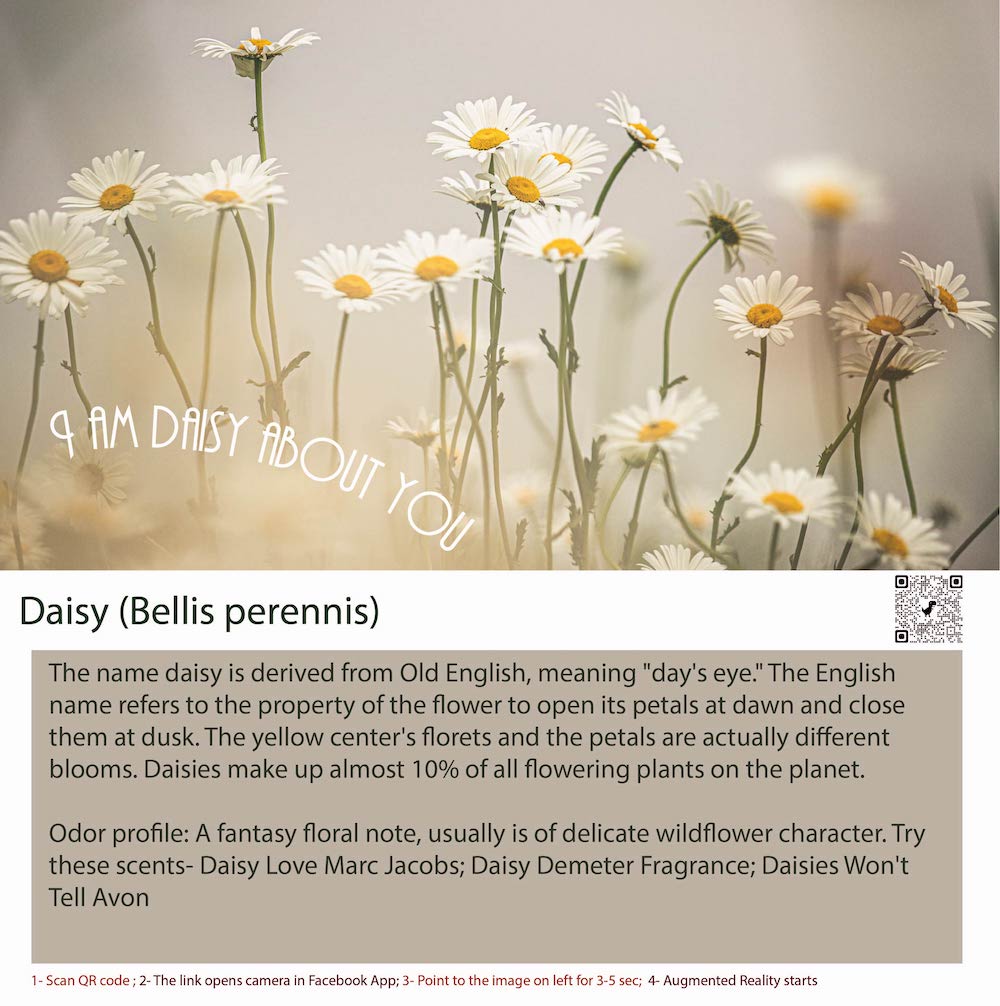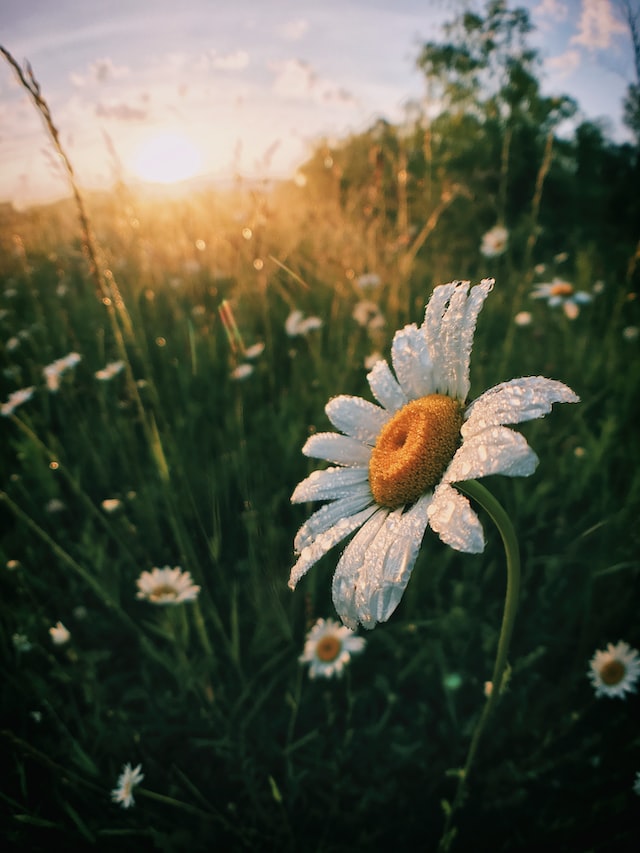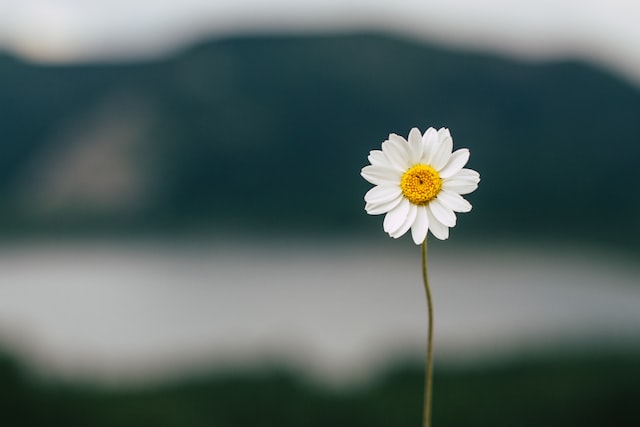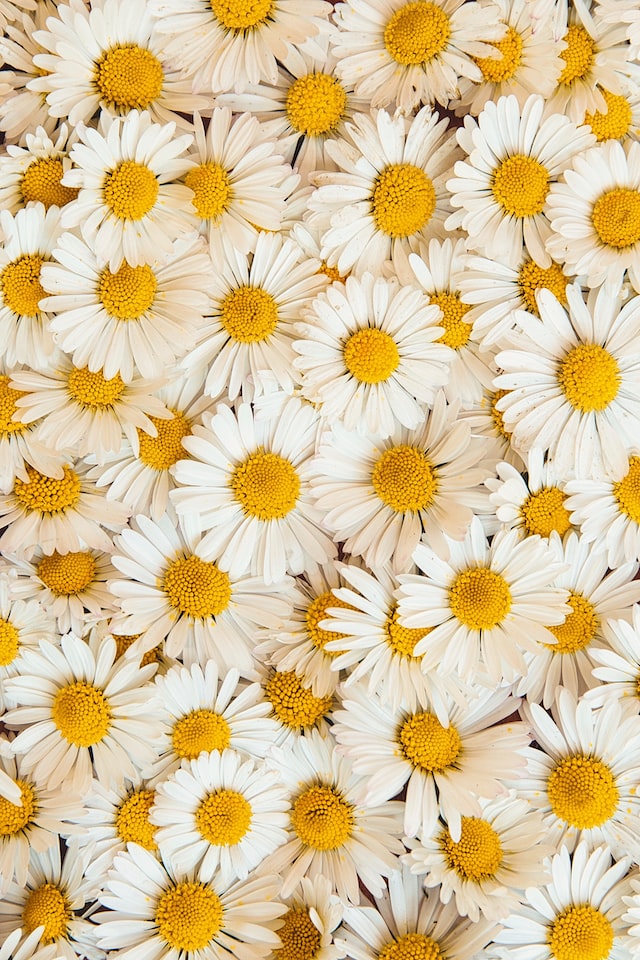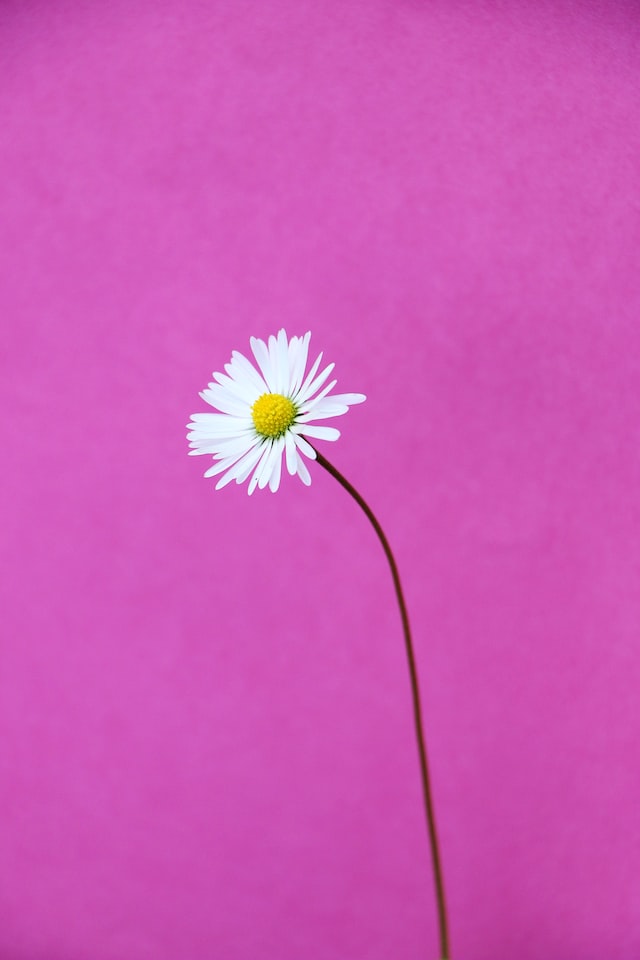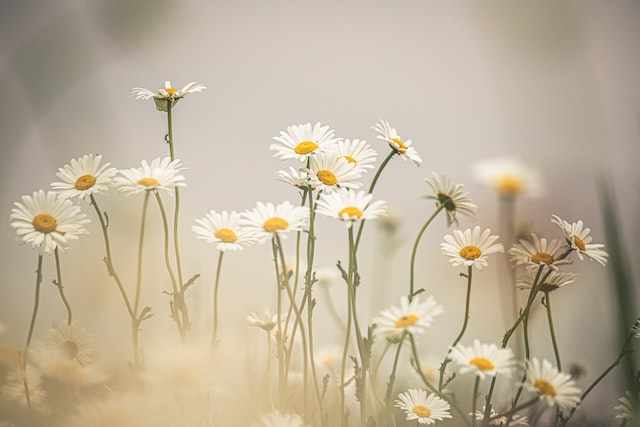Unveiling the Essence of Daisy: Sweet Happy Perfume
Daisy: The Symbol of Innocence and Simplicity
The daisy, with its delicate white petals and sunny yellow center, is a flower that exudes simplicity and innocence. Its charm and versatility have made it a beloved bloom in various aspects of human life, from perfumes and therapeutic oils to culinary delights and traditional medicine. In this extensive article, we delve into the world of daisies, exploring their significance in perfumes, therapeutic oils, culinary creations, medicinal practices, historical relevance, and even uncovering some fun and crazy facts about these delightful flowers.
Daisy in Perfumes: A Breath of Freshness
The daisy's delicate fragrance may not be as pronounced as some other flowers, but its subtle, clean, and fresh aroma makes it a popular note in perfumes. Perfumers often use the essence of daisies to add a touch of lightness and innocence to their creations. The fragrance of daisies is often described as gentle, floral, and slightly sweet, evoking feelings of nostalgia and simplicity.
Daisy in Therapeutic Oils: A Gentle Remedy
Daisy essential oil, extracted from the petals of the flower through various methods such as steam distillation, is known for its therapeutic properties. The oil is believed to have calming and soothing effects, making it a favorite in aromatherapy to reduce stress, anxiety, and promote relaxation. The gentle and tranquil scent of daisy oil helps create a serene ambiance.
Daisy in Culinary Delights: A Touch of Elegance
While not as commonly used as some other edible flowers, daisies have made their way into culinary creations as a decorative element. The delicate white petals of the daisy add an elegant touch to salads, desserts, and beverages. In certain cultures, daisies are also used to make herbal teas and infusions, providing a mild and soothing flavor.
Daisy in Traditional Medicine: A Symbol of Healing
Throughout history, daisies have been associated with various healing properties in traditional medicine. In ancient times, daisies were used as a remedy for various ailments, including digestive issues and skin conditions. Today, herbalists and natural health practitioners still recognize the potential medicinal benefits of daisies, although scientific research on their therapeutic properties is limited.
Historical Significance of Daisy: A Flower of Legends
The daisy holds a rich historical significance, with its roots tracing back to ancient legends and myths. In ancient Roman mythology, the daisy was associated with the goddess Venus, symbolizing love and purity. In Norse mythology, the daisy was linked to the goddess Freya, the goddess of love, beauty, and fertility. Over the centuries, the daisy has continued to be a symbol of innocence, purity, and new beginnings.
Fun Crazy Facts about Daisies
The daisy, with its understated beauty, endearing fragrance, and multiple applications, continues to be a symbol of simplicity and innocence. From perfumes that evoke nostalgia to therapeutic oils that calm the senses, from occasional culinary delights to its historical and cultural significance, daisies bring a touch of elegance and freshness to the world. Their resilience and ability to thrive in diverse conditions mirror the human spirit, while their association with love and purity transcends time and cultures. So, the next time you encounter a daisy, take a moment to appreciate the charm and versatility of this unassuming flower that has captured hearts throughout history.
The daisy, with its delicate white petals and sunny yellow center, is a flower that exudes simplicity and innocence. Its charm and versatility have made it a beloved bloom in various aspects of human life, from perfumes and therapeutic oils to culinary delights and traditional medicine. In this extensive article, we delve into the world of daisies, exploring their significance in perfumes, therapeutic oils, culinary creations, medicinal practices, historical relevance, and even uncovering some fun and crazy facts about these delightful flowers.
Daisy in Perfumes: A Breath of Freshness
The daisy's delicate fragrance may not be as pronounced as some other flowers, but its subtle, clean, and fresh aroma makes it a popular note in perfumes. Perfumers often use the essence of daisies to add a touch of lightness and innocence to their creations. The fragrance of daisies is often described as gentle, floral, and slightly sweet, evoking feelings of nostalgia and simplicity.
Daisy in Therapeutic Oils: A Gentle Remedy
Daisy essential oil, extracted from the petals of the flower through various methods such as steam distillation, is known for its therapeutic properties. The oil is believed to have calming and soothing effects, making it a favorite in aromatherapy to reduce stress, anxiety, and promote relaxation. The gentle and tranquil scent of daisy oil helps create a serene ambiance.
Daisy in Culinary Delights: A Touch of Elegance
While not as commonly used as some other edible flowers, daisies have made their way into culinary creations as a decorative element. The delicate white petals of the daisy add an elegant touch to salads, desserts, and beverages. In certain cultures, daisies are also used to make herbal teas and infusions, providing a mild and soothing flavor.
Daisy in Traditional Medicine: A Symbol of Healing
Throughout history, daisies have been associated with various healing properties in traditional medicine. In ancient times, daisies were used as a remedy for various ailments, including digestive issues and skin conditions. Today, herbalists and natural health practitioners still recognize the potential medicinal benefits of daisies, although scientific research on their therapeutic properties is limited.
Historical Significance of Daisy: A Flower of Legends
The daisy holds a rich historical significance, with its roots tracing back to ancient legends and myths. In ancient Roman mythology, the daisy was associated with the goddess Venus, symbolizing love and purity. In Norse mythology, the daisy was linked to the goddess Freya, the goddess of love, beauty, and fertility. Over the centuries, the daisy has continued to be a symbol of innocence, purity, and new beginnings.
Fun Crazy Facts about Daisies
- The daisy is part of the Asteraceae family, which also includes sunflowers and chrysanthemums.
- Daisies are one of the most resilient flowers, able to grow in various soil types and climates.
- Daisies are not a single flower but a composite of several small flowers called florets, surrounded by delicate petals.
- The term "he loves me, he loves me not" is often associated with daisies, where people pluck the petals one by one to determine the affection of a loved one.
The daisy, with its understated beauty, endearing fragrance, and multiple applications, continues to be a symbol of simplicity and innocence. From perfumes that evoke nostalgia to therapeutic oils that calm the senses, from occasional culinary delights to its historical and cultural significance, daisies bring a touch of elegance and freshness to the world. Their resilience and ability to thrive in diverse conditions mirror the human spirit, while their association with love and purity transcends time and cultures. So, the next time you encounter a daisy, take a moment to appreciate the charm and versatility of this unassuming flower that has captured hearts throughout history.
To experience augmented reality, please open the Facebook-app using QR code and point to the image below
Explore Floral Aromatics at Scentopia Singapore
Daisy is a name of English origin, meaning "day's eye" or "the flower that opens in the day." It can also refer to the daisy flower, a common wildflower with a yellow center and white petals. In literature, "Daisy" is a nickname for the character Daisy Buchanan in F. Scott Fitzgerald's novel The Great Gatsby.
Elevate Your Fragrance Collection with Sweet Happy Perfume
Daisy flowers have a long history in mythology and folklore. In ancient Greece, the daisy was associated with the goddess Aphrodite, who was said to have created the flower from the tears of Adonis. In medieval times, daisies were believed to have healing properties and were used in the treatment of a variety of ailments.
In English folklore, daisies were believed to have grown where the blood of martyrs had fallen to the ground. They were also associated with innocence and childhood, and were sometimes used in divination games.
In literature, the daisy is a symbol of simplicity, purity and innocence. It is also known as "the flower of love" and "the flower of God" and is often associated with the Virgin Mary, symbolizing the purity and innocence of the Immaculate Conception.
In modern times, daisies are often used as a symbol of hope, renewal and new beginnings.
In English folklore, daisies were believed to have grown where the blood of martyrs had fallen to the ground. They were also associated with innocence and childhood, and were sometimes used in divination games.
In literature, the daisy is a symbol of simplicity, purity and innocence. It is also known as "the flower of love" and "the flower of God" and is often associated with the Virgin Mary, symbolizing the purity and innocence of the Immaculate Conception.
In modern times, daisies are often used as a symbol of hope, renewal and new beginnings.
The Inspiration Behind Sweet Happy Perfume
Daisy essential oil is derived from the flowers of the Bellis perennis plant, also known as the English daisy. The essential oil is extracted through steam distillation and has a fresh, sweet, and slightly spicy scent.
Daisy essential oil is known for its skin-healing properties and is often used to treat a variety of skin conditions, such as eczema, psoriasis, and acne. It is also believed to have anti-inflammatory and antiseptic properties, making it an effective treatment for minor cuts, scrapes, and burns.
In aromatherapy, daisy essential oil is thought to have a calming and soothing effect, helping to reduce stress and anxiety. It is also believed to help improve sleep quality and promote feelings of happiness and well-being.
Daisy essential oil should be used with caution, as it can cause skin irritation and sensitivity if used in high concentrations. It should also be avoided during pregnancy and breastfeeding. It's always recommended to seek the advice of a qualified aromatherapist or healthcare provider before using any essential oils.
Daisy essential oil is known for its skin-healing properties and is often used to treat a variety of skin conditions, such as eczema, psoriasis, and acne. It is also believed to have anti-inflammatory and antiseptic properties, making it an effective treatment for minor cuts, scrapes, and burns.
In aromatherapy, daisy essential oil is thought to have a calming and soothing effect, helping to reduce stress and anxiety. It is also believed to help improve sleep quality and promote feelings of happiness and well-being.
Daisy essential oil should be used with caution, as it can cause skin irritation and sensitivity if used in high concentrations. It should also be avoided during pregnancy and breastfeeding. It's always recommended to seek the advice of a qualified aromatherapist or healthcare provider before using any essential oils.
Daisy Fun Facts:
- The daisy is a member of the Asteraceae family, which also includes sunflowers, chrysanthemums, and marigolds.
- Daisies come in many different colors, not just white and yellow. They can be found in shades of pink, red, orange, and even black.
- The daisy is the national flower of England.
- The daisy is the birth flower for April
- The daisy is a popular flower in the language of flowers and it symbolizes innocence, loyal love, and purity.
- The scientific name of the English daisy is Bellis perennis, which means "everlasting beautiful".
- The daisy is a popular flower in many cultures, and it is known by many different names around the world, such as Bruisewort, Marguerite, and Gänseblümchen.
- Daisies are considered a weed in many countries and are known to grow in many different types of soil and environments.
- The daisy is a traditional Easter flower, symbolizing new beginnings and resurrection.
- The daisy is a popular flower for making daisy chains, a necklace made by threading daisies together by their stems.
Crafting the Daisy Fragrance: A Blend of Elegance
Daisy is a popular fragrance brand and the name of a perfume by Marc Jacobs. The Daisy perfume was first launched in 2007 and has since become one of the brand's most popular scents. It is a youthful, fresh and feminine fragrance, with top notes of strawberry, violet leaves and blood grapefruit, middle notes of violet, jasmine and gardenia, and base notes of musk, vanilla and white woods. The scent has been described as a playful, floral and fruity fragrance, with a hint of musk that makes it suitable for both day and night. The Daisy line of perfumes and fragrances has been expanded over the years, with several different versions and variations released, such as the Daisy Dream, Daisy Love, Daisy Eau So Fresh, and more.
Some of the most well-known Daisy perfumes include:
It is worth noting that, as always, perfumes are a matter of personal preference and it's always recommended to test a scent before making a purchase.
There are also various perfume workshops where you can create your own signature scent. Ine such place is Scentopia
Some of the most well-known Daisy perfumes include:
- Daisy Eau So Fresh: This is a lighter, fresher version of the original Daisy fragrance, with top notes of raspberry, grapefruit and pear, middle notes of wild rose, apple blossom and jasmine, and base notes of musk, cedar and plum.
- Daisy Dream: This is a more floral and airy version of Daisy, with top notes of blackberry, grapefruit and pear, middle notes of jasmine, lychee and blue wisteria, and base notes of white woods, musk and coconut water.
- Daisy Love: This is a more recent addition to the Daisy line and features a sweet, fresh and feminine scent with notes of daisy tree petals, cashmere musk and driftwood.
- Daisy Marc Jacobs: This is the original Daisy scent, with a youthful, fresh and feminine fragrance, with top notes of strawberry, violet leaves and blood grapefruit, middle notes of violet, jasmine and gardenia, and base notes of musk, vanilla and white woods.
- Daisy Dream Forever: This version of Daisy Dream fragrance is a more intense and long lasting version of the original Daisy Dream with a combination of floral and fruity notes.
It is worth noting that, as always, perfumes are a matter of personal preference and it's always recommended to test a scent before making a purchase.
There are also various perfume workshops where you can create your own signature scent. Ine such place is Scentopia
Join Scentopia, Sentosa's latest tourist attraction wonderful orchid scent crafting, fragrance tour, bridal shower or corporate team building which includes perfume making onsite and offsite, beach activities and more. We also serve primary school learning journey, secondary students and pupil on industrial excursions. Know more about our orchids perfume bar or therapeutic orchid scents and other wellness aromas. Conatct Perfume workshop or book a scent crafting session here.

